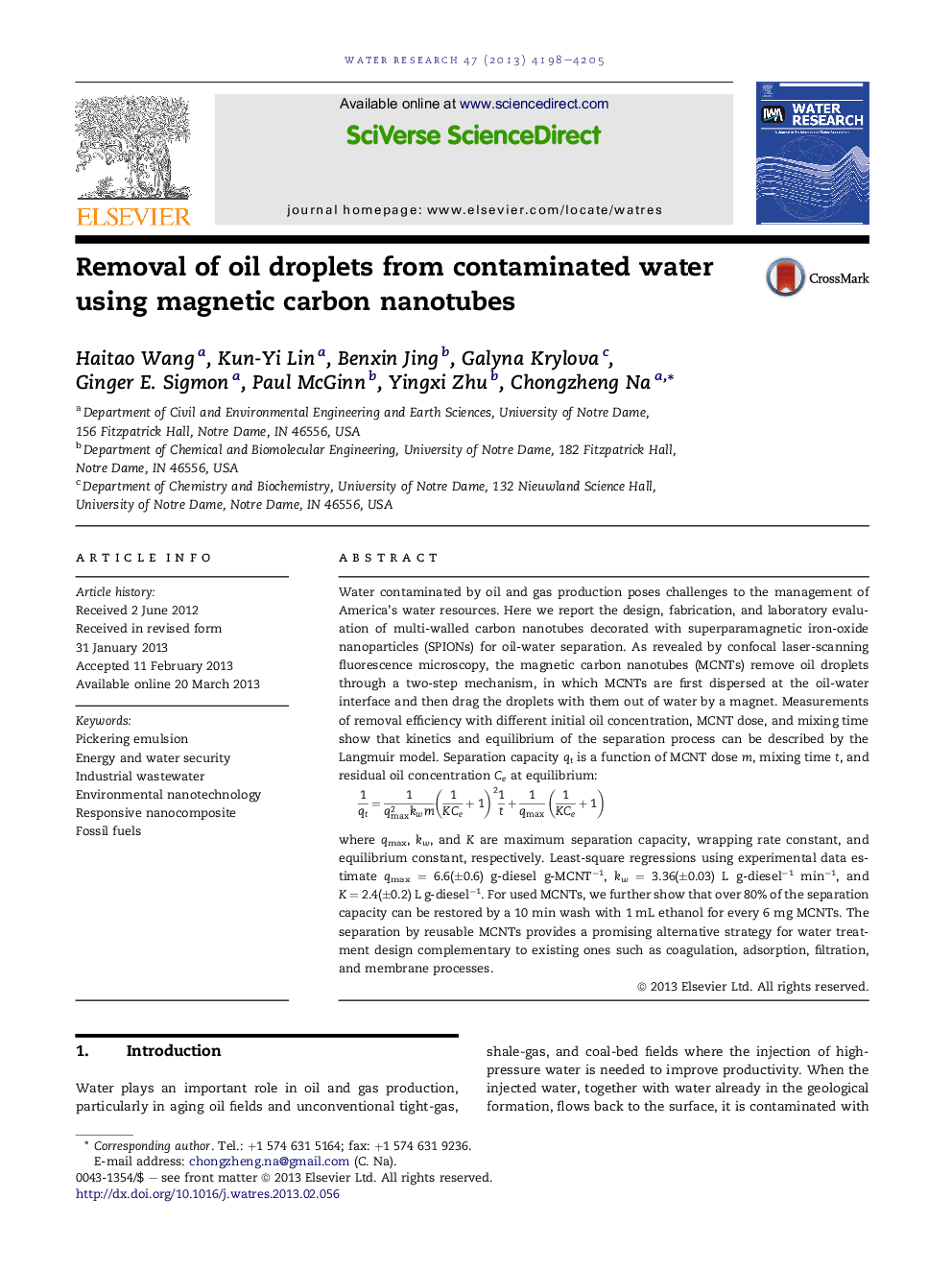| Article ID | Journal | Published Year | Pages | File Type |
|---|---|---|---|---|
| 4481789 | Water Research | 2013 | 8 Pages |
•MCNTs are designed by integrating amphiphobic multi-walled CNTs and SPIONs.•MCNTs remove oil droplets from water by a two-step mechanism.•The kinetics and thermodynamics of treatment conforms to the Langmuir model.•Spent MCNTs can be washed in ethanol for material regeneration and oil recovery.
Water contaminated by oil and gas production poses challenges to the management of America's water resources. Here we report the design, fabrication, and laboratory evaluation of multi-walled carbon nanotubes decorated with superparamagnetic iron-oxide nanoparticles (SPIONs) for oil-water separation. As revealed by confocal laser-scanning fluorescence microscopy, the magnetic carbon nanotubes (MCNTs) remove oil droplets through a two-step mechanism, in which MCNTs are first dispersed at the oil-water interface and then drag the droplets with them out of water by a magnet. Measurements of removal efficiency with different initial oil concentration, MCNT dose, and mixing time show that kinetics and equilibrium of the separation process can be described by the Langmuir model. Separation capacity qt is a function of MCNT dose m, mixing time t, and residual oil concentration Ce at equilibrium:1qt=1qmax2kwm(1KCe+1)21t+1qmax(1KCe+1) where qmax, kw, and K are maximum separation capacity, wrapping rate constant, and equilibrium constant, respectively. Least-square regressions using experimental data estimate qmax = 6.6(±0.6) g-diesel g-MCNT−1, kw = 3.36(±0.03) L g-diesel−1 min−1, and K = 2.4(±0.2) L g-diesel−1. For used MCNTs, we further show that over 80% of the separation capacity can be restored by a 10 min wash with 1 mL ethanol for every 6 mg MCNTs. The separation by reusable MCNTs provides a promising alternative strategy for water treatment design complementary to existing ones such as coagulation, adsorption, filtration, and membrane processes.
Graphical abstractFigure optionsDownload full-size imageDownload high-quality image (86 K)Download as PowerPoint slide
